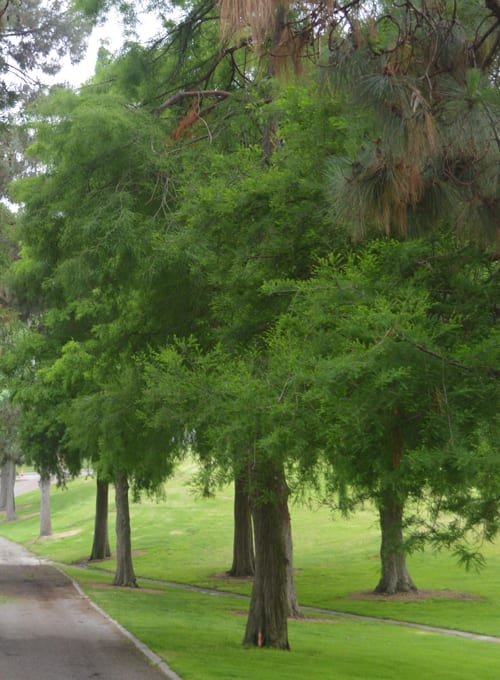
Vision
Begin with the end in mind.
— Steven Covey
Vision statements ensure that developers of a plan have a common understanding about the outcome. Vision statements include elements that describe both the urban forest itself and how it is cared for and valued by the people who manage it. For example, if we achieve our goals, how will the area be different than it is now? Or, what do you want the urban forest to look like as a result of the plan?
Visioning is a planning process through which a community creates a shared vision for its future and begins to make it a reality.
When creating a vision with a group of stakeholders, you might ask them to close their eyes and imagine what they would like to see in the future. Then have them write it on the group’s “vision” board. Of course, there are no wrong answers. After listing ideas, work with the group to craft a joint vision statement.


Point Loma
Point Loma’s vision is to sustain the thriving and diverse urban forest on the campus. It is a forest comprised of young and old, native and ornamental, historical and heritage trees. The forest is an integral part of the campus environment and one that is directly correlated to the recruitment and retention of our students. It provides aesthetic value to ocean views and plays a large role in environmental value. It impacts greenhouse gas emissions (GHG), storm water run-off, shelters buildings and hardscape. Our trees are part of what is known as the “Wooded” area of the peninsula and the first stop for migratory birds and should be protected and maintained.
Santa Clara Valley Water District
The Santa Clara Valley Water District will strive to protect and enhance the health and diversity of our urban forest as an essential social, environmental, economic, and community asset for future generations.
Riverside-Corona Resource Conservation District
A healthy, sustainable urban forest will be established and carefully managed at the Riverside-Corona Resource Conservation District’s Land Use Learning Center (LLC), which serves as a demonstration and educational resource for the inland regions of southern California.
The City of Davis
The City of Davis will be a community identified and shaded by a “living umbrella”. Relying on the Community Forest Management Plan, the City of Davis will actively encourage participation in tree planting and stewardship, preserve and protect existing trees, promote public safety and tree health, implement cost effective enhancement and maintenance of the forest, increase public awareness of the value of our community forest, and maximize the social, economic, and environmental benefits of the community forest for current residents and future generations.
City of West Sacramento
By the year 2032, the city of West Sacramento will be shaded by an urban forest that is the pride of both residents and city employees alike. West Sacramento’s residents will have a thorough understanding of the benefits of a healthy forest and will work together to ensure its sustainability for future generations.
City of Long Beach
By the year 2025, Long Beach’s urban forest will be a healthy and diverse forest of multi-aged and city appropriate trees. The urban forest will be recognized as a vital, functioning part of the city’s infrastructure and will be included in the vision for all future development. Members of the entire Long Beach community will experience a healthier wellbeing from the urban forest through reduced energy costs, reduced pollution and softened city noise. The urban forest canopy cover will be extensive and reduce the heat island effect within the city. Long Beach residents will view the urban forest as an important part of the city’s character and as an indicator of the city’s health and livability. Management of the urban forest is successful because the city of Long Beach has formed meaningful partnerships with businesses, local organizations and residents to ensure the forest is protected and maintained. Due to careful management and sustained care, the urban forest greatly enhances the environmental, economic and social wellbeing of the city.
Sample Template
Our vision for the future of _______ is to create a healthy and sustainable urban forest that is properly managed and cared for, benefiting our citizens with improved economic and environmental well-being, increasing public safety, and enabling our employees to provide cost effective maintenance. Our urban forest will have a large variety of trees consisting of various sizes, ages, and species. The trees will be selected and maintained according to the Best Management Practices (BMPs) established by the International Society of Arboriculture (ISA).
What do you want the urban forest to look like as a result of the plan?
What is the community’s/organization’s vision for the urban forest?
Describe the urban forest itself and how it will be cared for and valued by the people who manage it. For example, if we achieve our goals, how will the area be different than it is now?
As you proceed through the urban forest management planning process you may decide to re-visit and change your initial vision statement to include updated findings.
0 Comments